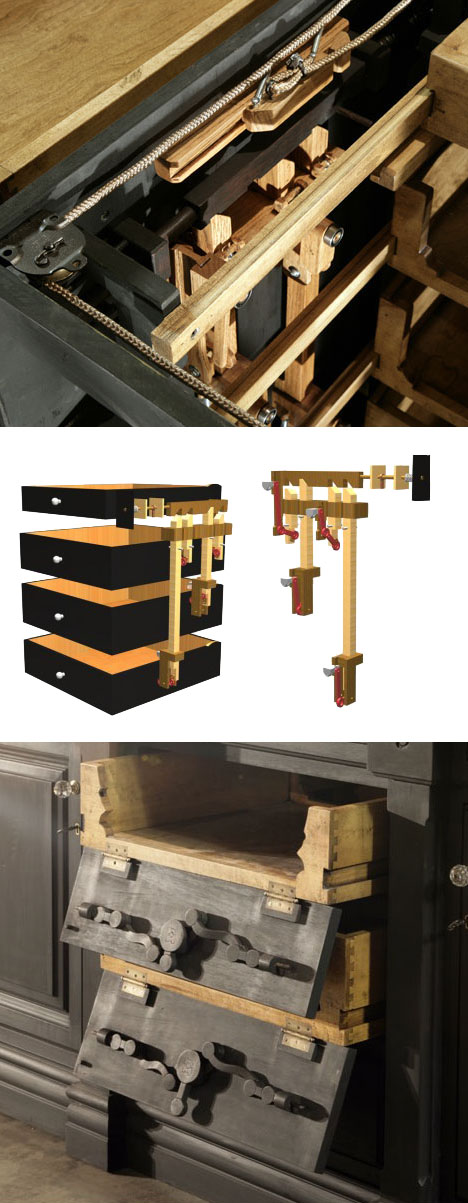Furniture with Secret Compartments, Part 2: Ready to Make Your Own?
 images via Designed & Made
images via Designed & Madeimages via Designed & Made
For your average industrial designer, it's not enough to know that furniture with built-in secret compartments exist: We want to know how these things are built. Sometimes there are simple construction tricks we can use, as with the first neat hidden compartment revealed in the video below:
The video above is by Popular Woodworking, who revealed how to make the spice drawers above in an article from last year. Other companies are hawking DVDs on how to construct hidden compartments in a variety of objects, as in this somewhat odd match-up between magician James Coats and contractor/designer Dan Hamann:
Of course, the best designers among us will come up with our own solutions. The most extreme example I've seen of this comes from Brian Grabski, the designer/craftsmen behind a custom woodworking company called Designed & Made. Grabski and his buddy Mike Prom, who sells Autodesk products and is an expert at both AutoCAD and Inventor, had heard about a secret-compartment desk featured in the movie National Treasure 2. As Grabski describes,[One night] we had two too many cocktails out in the front porch...after we started talking about it we watched [National Treasure 2] instantly on Netflix. We skipped to the scene in that movie and paused it several times to see if we could get anything useful out of it, we didn't. I am pretty sure that Hollywood's design doesn't actually work in real life.
No matter; with Grabski's design/build skills and Prom's Autodesk expertise, the duo set about designing their own mechanism. The fiendishly complicated workings they devised are revealed in the videos below:
Frustratingly, not a single video exists showing what we all want to see: Clear visuals of someone actually operating the thing. While there is a video dedicated to the piece here, the emphasis is on abstract, artsy presentation rather than clarity. To get a sense of how Grabski and Prom's creation works, we must instead rely on a text description:
The hand-crafted custom bookcase requires you pull open each of the visible drawers, before a hidden control springs out and allows you to trigger the secret compartment built into what looks like a normal molding.
To make things more complex, each of the drawers must be pulled out to a certain point before the latches they control slide out of the way, similar to how the pins in a regular lock work. That finally allows a length of wooden dowel to slide out - hidden, normally, as a knot in the wood itself—and when you twist it and then push it back in, a cable tracked around the back of the cabinet allows the hidden drawer to spring out.
Grabski does, however, have at least one video showing something a little easier to understand: The tip-down drawer fronts meant to conceal stereo components within the same bookcase.
I'm hoping at least a few of you mad-scientist woodworkers will be inspired to come up with hidden-compartment furniture of your own. If you do and are willing to video them with some clarity, be sure to drop me a line at [rain] *at* core77 -dot- com.
-
oFavorite This
-
Q4Comment
K
{Welcome
Create a Core77 Account
Already have an account? Sign In
By creating a Core77 account you confirm that you accept the Terms of Use
K
Reset Password
Please enter your email and we will send an email to reset your password.


Comments
this should set your minds ablaze.
sorry but europe wont understand : \
http://www.designedandmade.com/2010/10/28/hidden-mechanism/